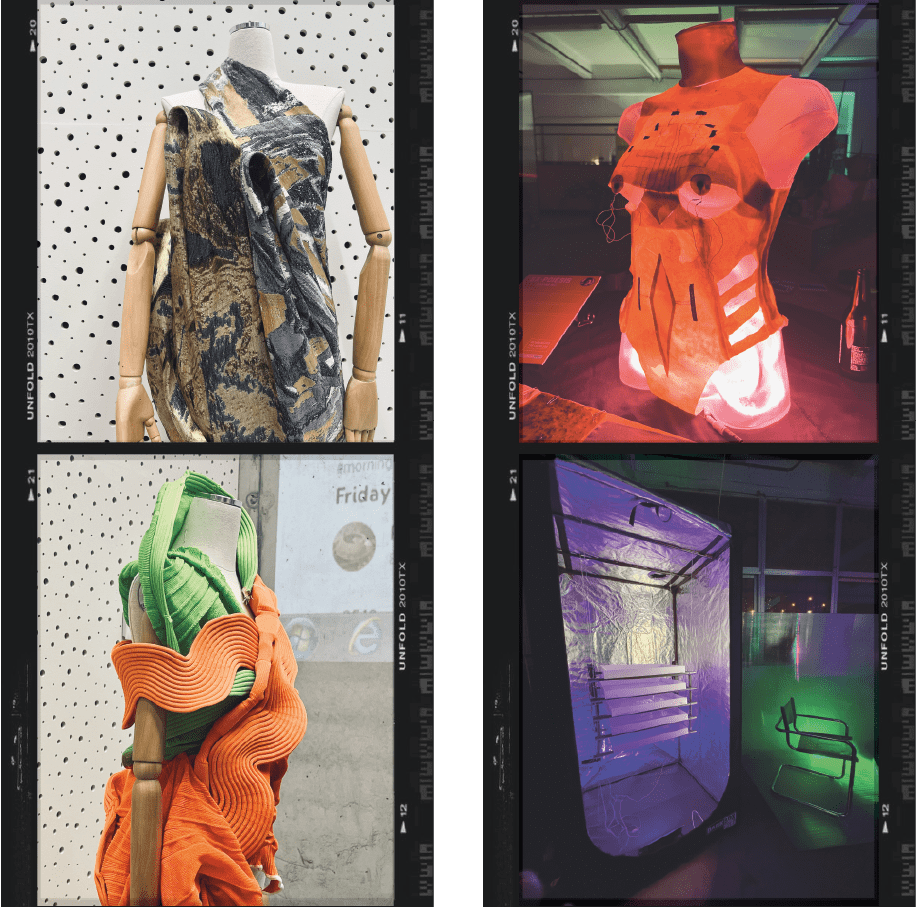9. TEXTILE SCAFFOLD¶
WEEK WORK¶

We dont realize all the waste that we generate by the end of the year, it is so important to pat attention to it and lear what to do with it to be able to transform it into a new product and reduce the enviromental impact, since it is so great that It does not give time for a decomposition but for an accumulation. That's why this week we focused and learned what we can do and create from waste and natural resurces thanks to Anastasia.
PROCESS AND WORKFLOW¶
Thanks to our instructor Julian, this week we have learned about the CNC machine to learn how to make molds.
CNC lathe or numerical control lathe refers to a lathe-type machine tool that is used to machine parts of revolution by means of computer sofware that uses alpha-numeric data, following the Cartesian axes X,Y.
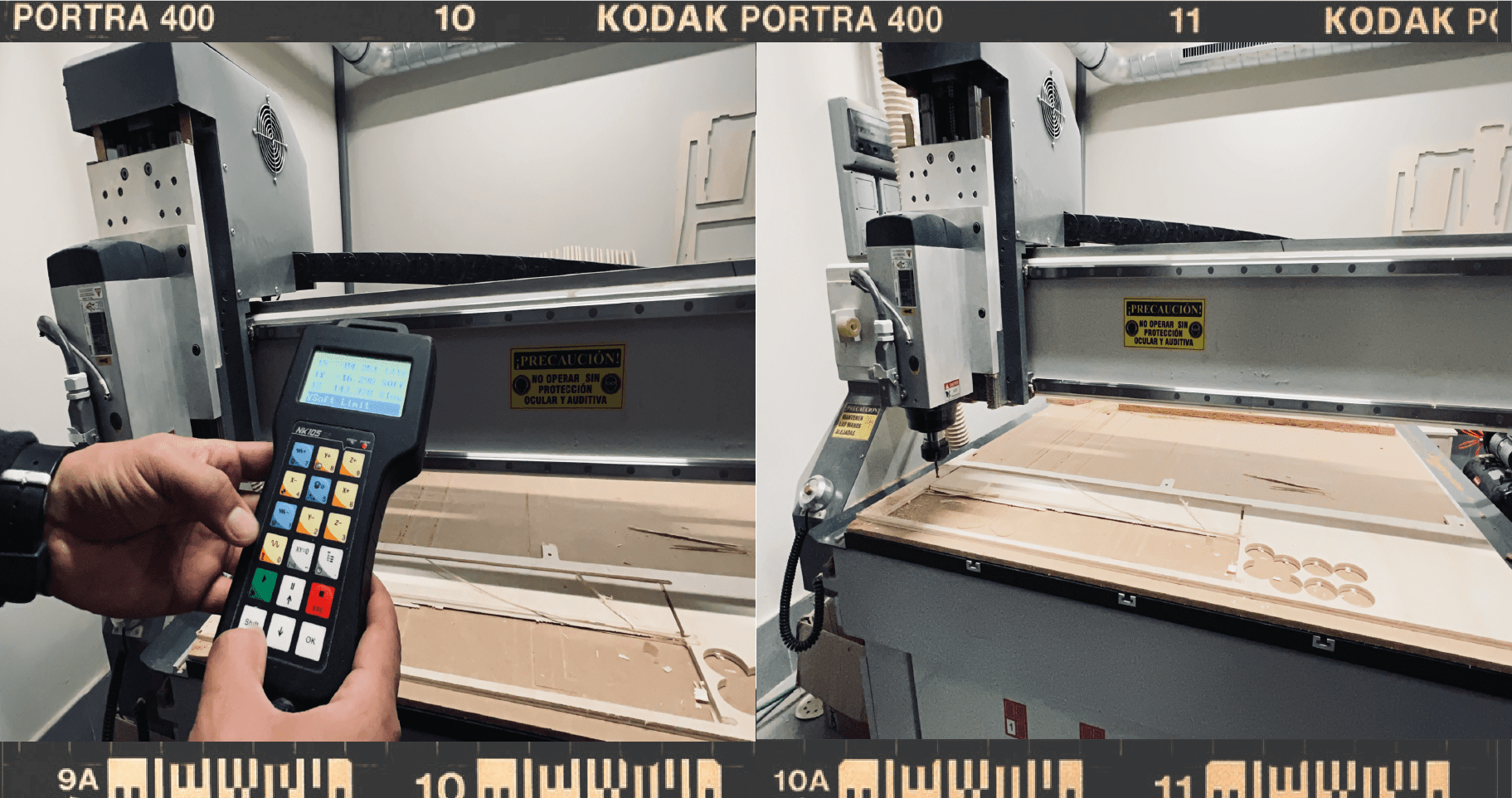
DESIGN¶
For the design process and the creation of the mold, we have used the Rhinoceros 7 program; I have been inspired by eyes, so I wated my mold to be an eye, it is still in the design process.
RHINO¶
For the design of the mold in Rhino, we have used the upper visualization, in this way we have created the design in plane with the POLYGON COMMAND to draw the hexagon, indicating that there were 6 sides of 130mm; then the CIRCLE COMMAND, to create the circumferences of the interior, adding the measures that we thought convenient.
Once our design is created and changing to perspective view, we have selected the EXTRUDE COMMAND, indicating a height of 20mm so that we can give height to our mold. For the circumferences we have also used the same command at different desired heights. Once finished, we select JOIN COMMAND to group the design and thus have a solid mold and with the possibility of taking it to the Aspire program.

ASPIRE¶
 Before taking it to the CNC machine, we need to use the Aspire program, to be able to go from the digital design done in Rhino to the mill.
Before taking it to the CNC machine, we need to use the Aspire program, to be able to go from the digital design done in Rhino to the mill.
ALL FILES CAN BE FOUND HERE
EJECUTATION¶
As I have explained before, this week we have been working with the CNC machine, for this reason, once we have finished designing the mold, it is time to prepare it for execution, but it is important to follow some safety regulations before and during the process.
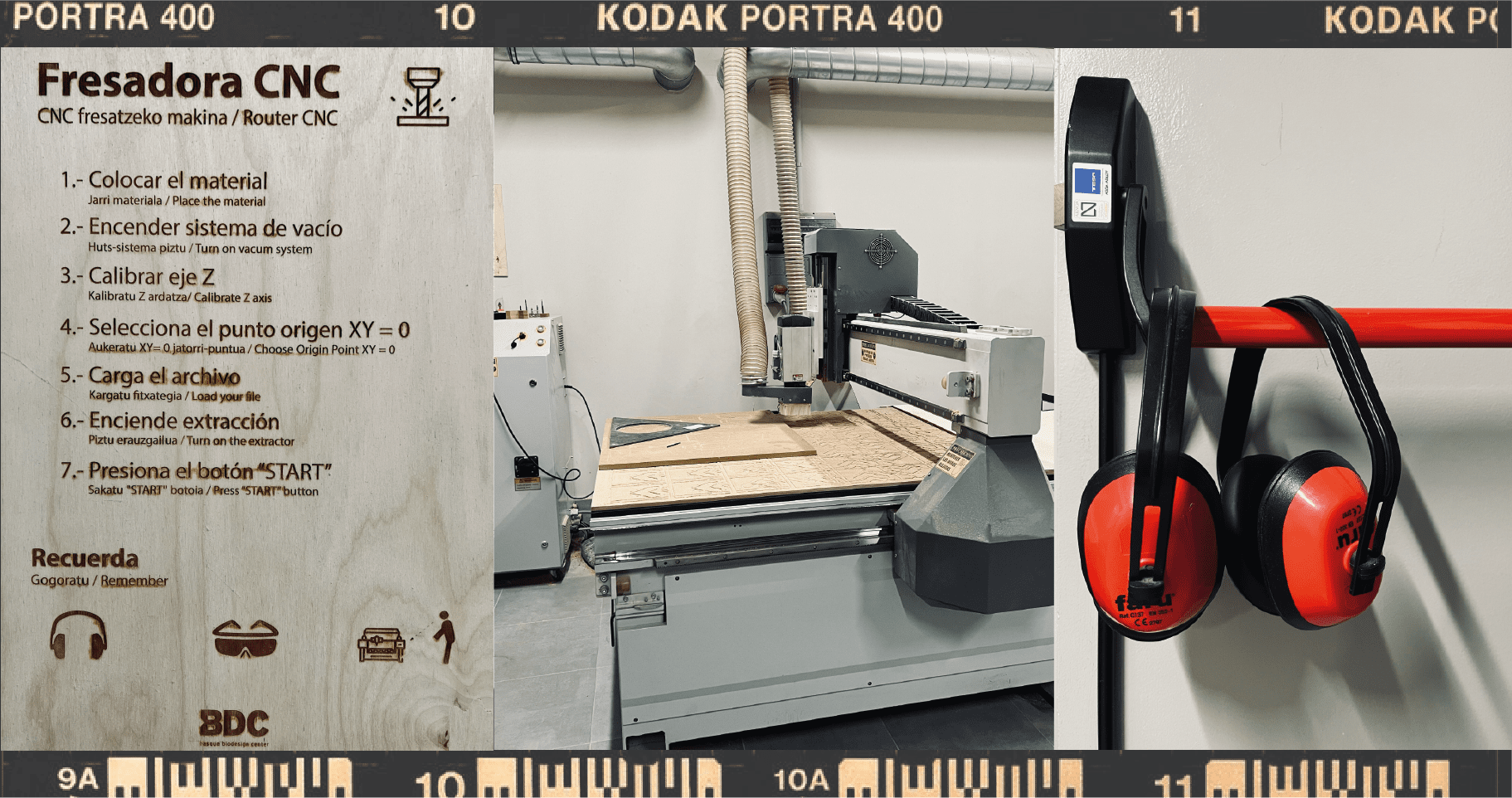
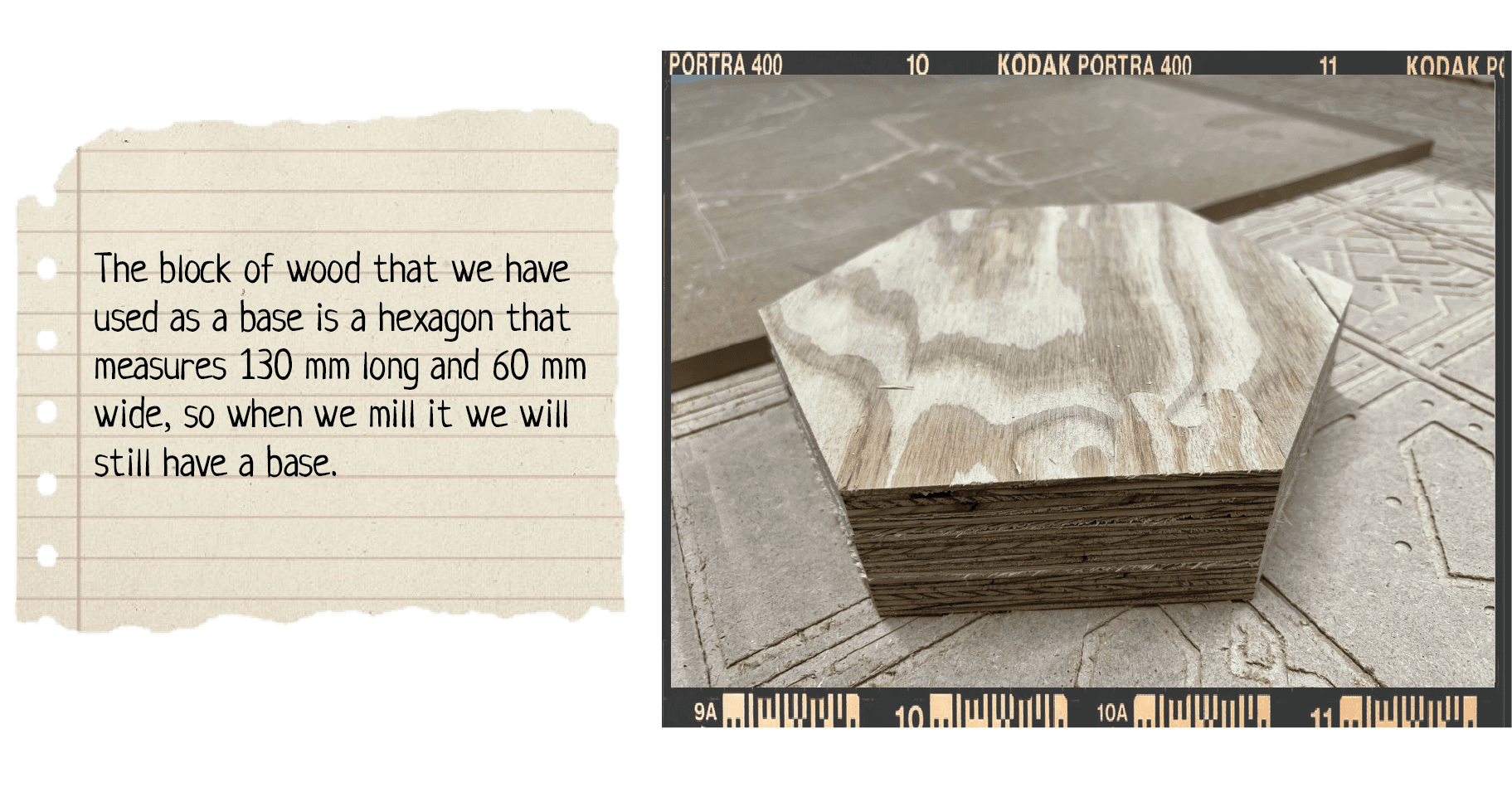
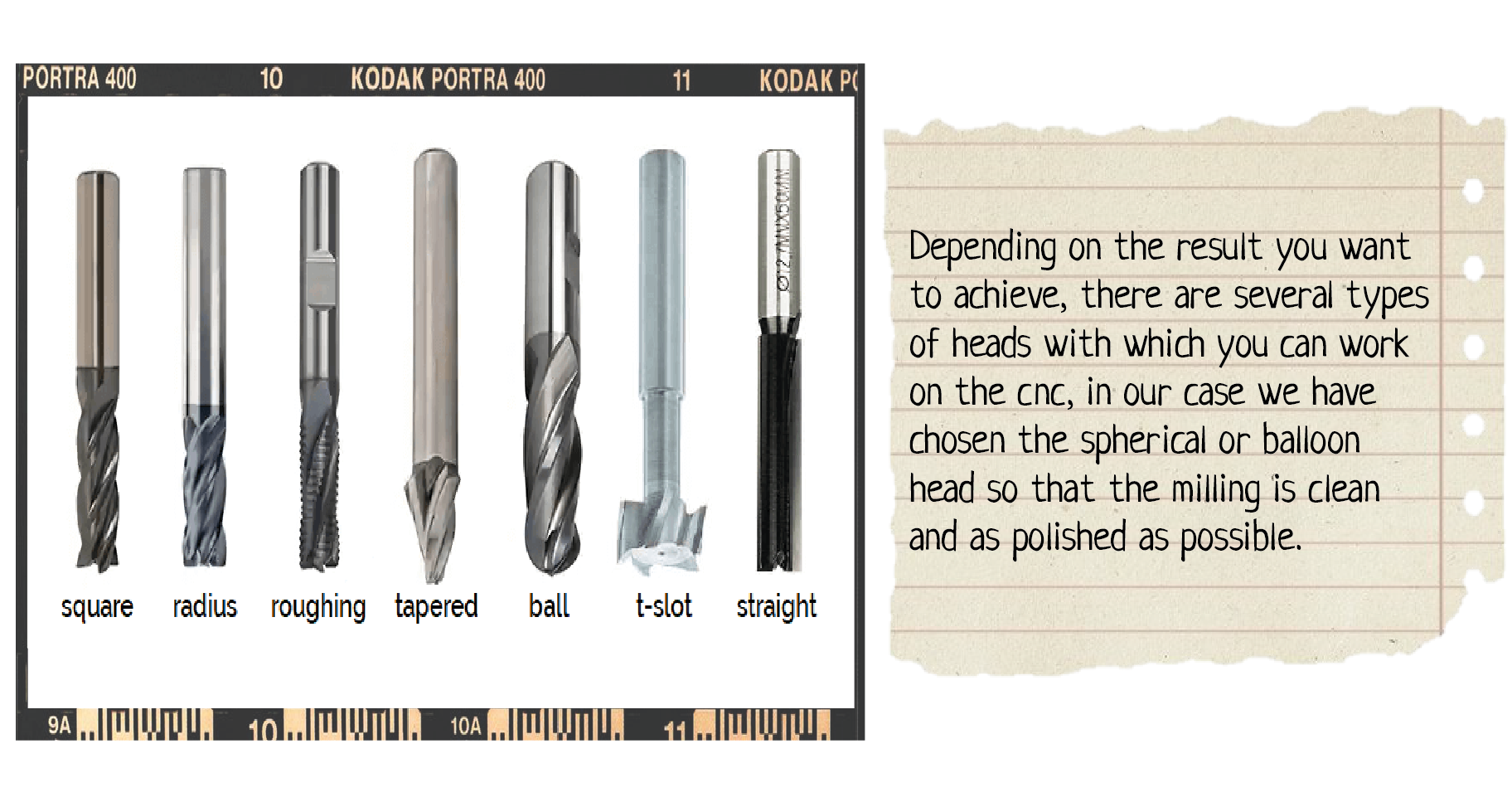
RESULT¶
After one hour, here you can see the result; we also used this mold to dry in our Kombucha, created during the biofabricating week.
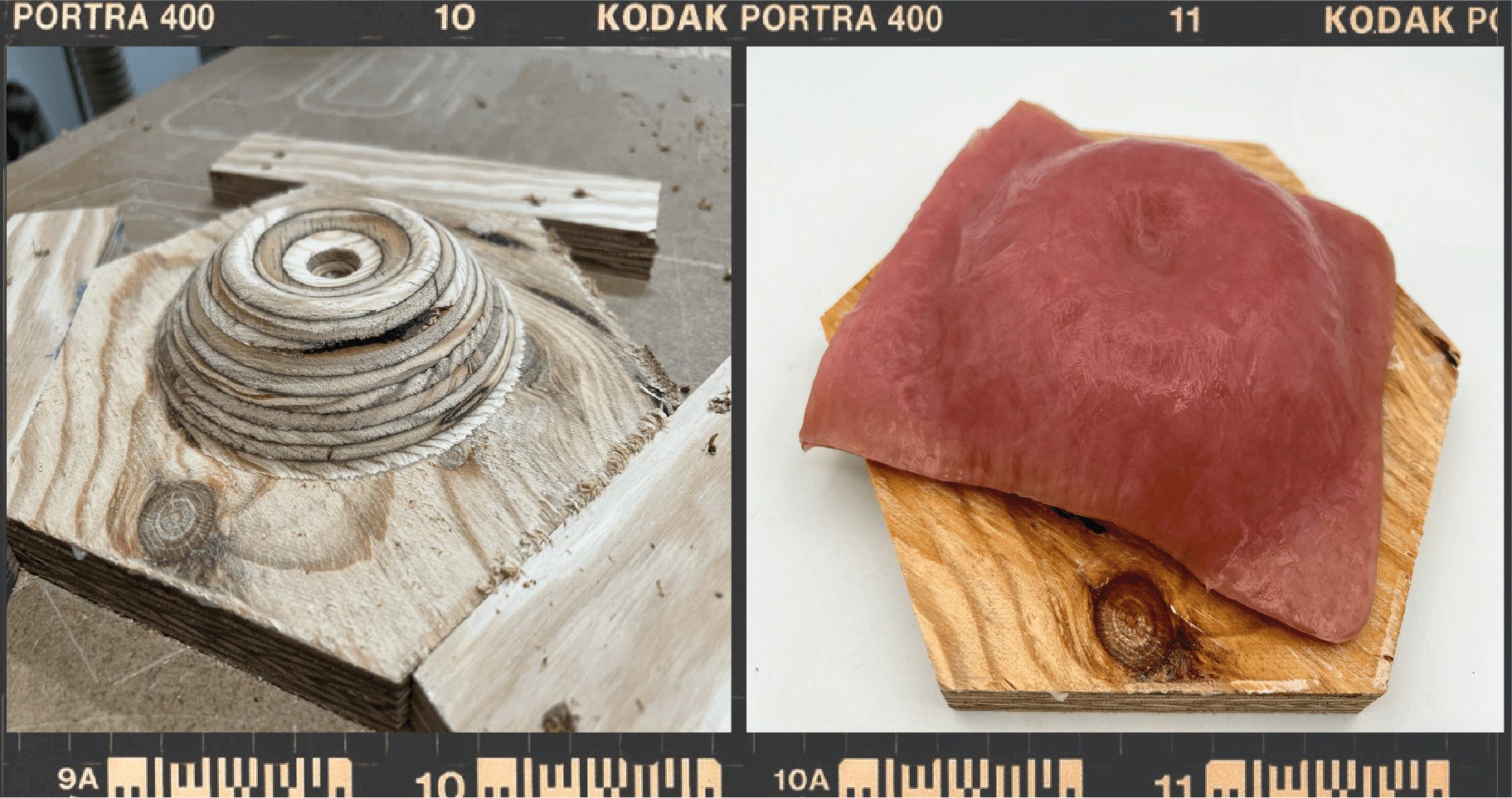

INVESTIGATION¶
This week my colleagues and I have been creating crystals by crystallization. Is the simplest and most effective technique to purify solid compounds. It consists of dissolving an impure solid in the smallest possible amount of the appropriate solvent and in heat. Under these conditions, a saturated solution is generated which, when cooled, becomes supersaturated and crystallization occurs.
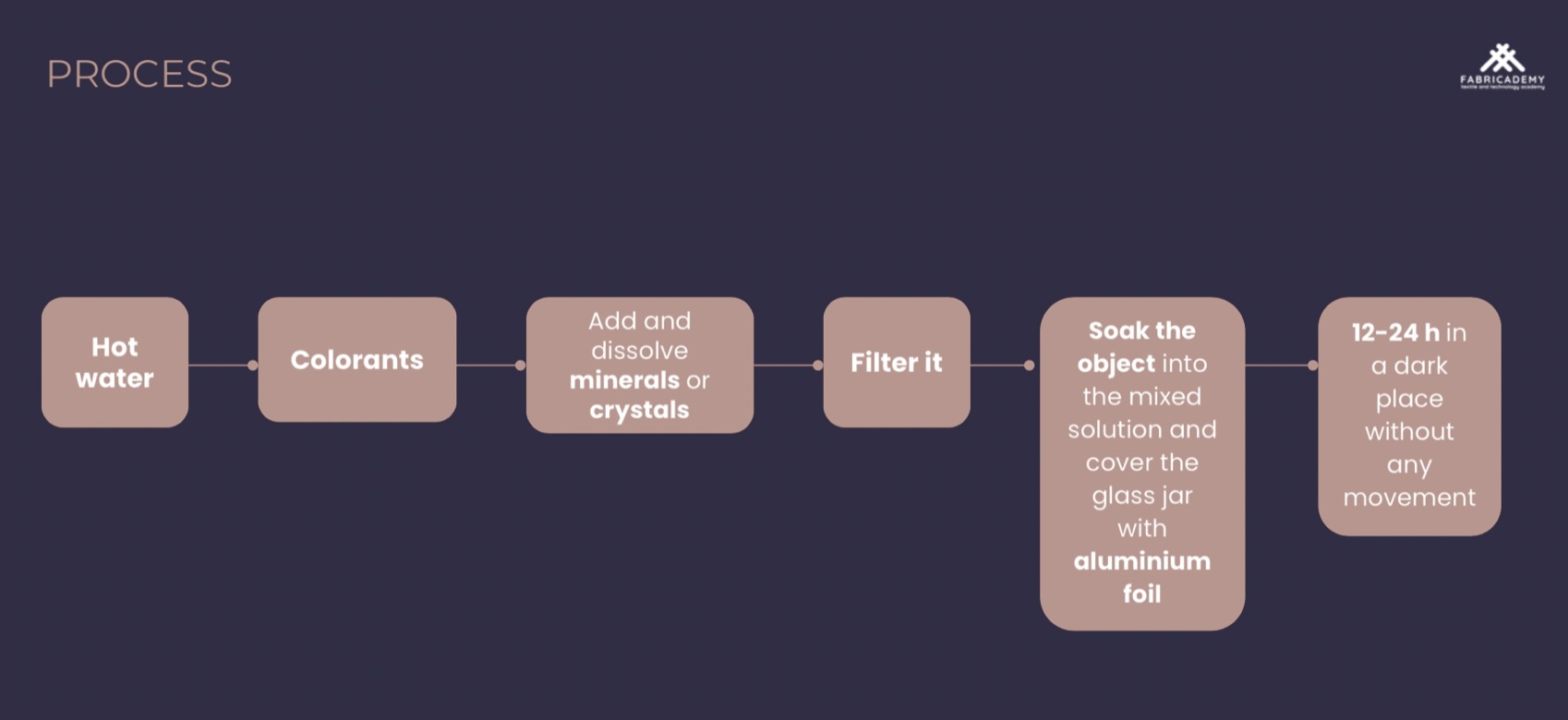 The creation process for crystallization is always the same: the first thing will be to measure the quantities; The ingredients will be put on the fire and once the water begins to boil, they will be mixed until there is no residue in the water; We will wait a couple of minutes for the water to warm up and thus not burn ourselves when passing it through the filter, in this way we will make sure that there is no glass or substance left; Finally, we will put in suspension, taking care that our materials that we are going to crystallize do not touch the bottom, since if they touch the bottom, the crystals will remain at the bottom of the container, example number 3.
The creation process for crystallization is always the same: the first thing will be to measure the quantities; The ingredients will be put on the fire and once the water begins to boil, they will be mixed until there is no residue in the water; We will wait a couple of minutes for the water to warm up and thus not burn ourselves when passing it through the filter, in this way we will make sure that there is no glass or substance left; Finally, we will put in suspension, taking care that our materials that we are going to crystallize do not touch the bottom, since if they touch the bottom, the crystals will remain at the bottom of the container, example number 3.
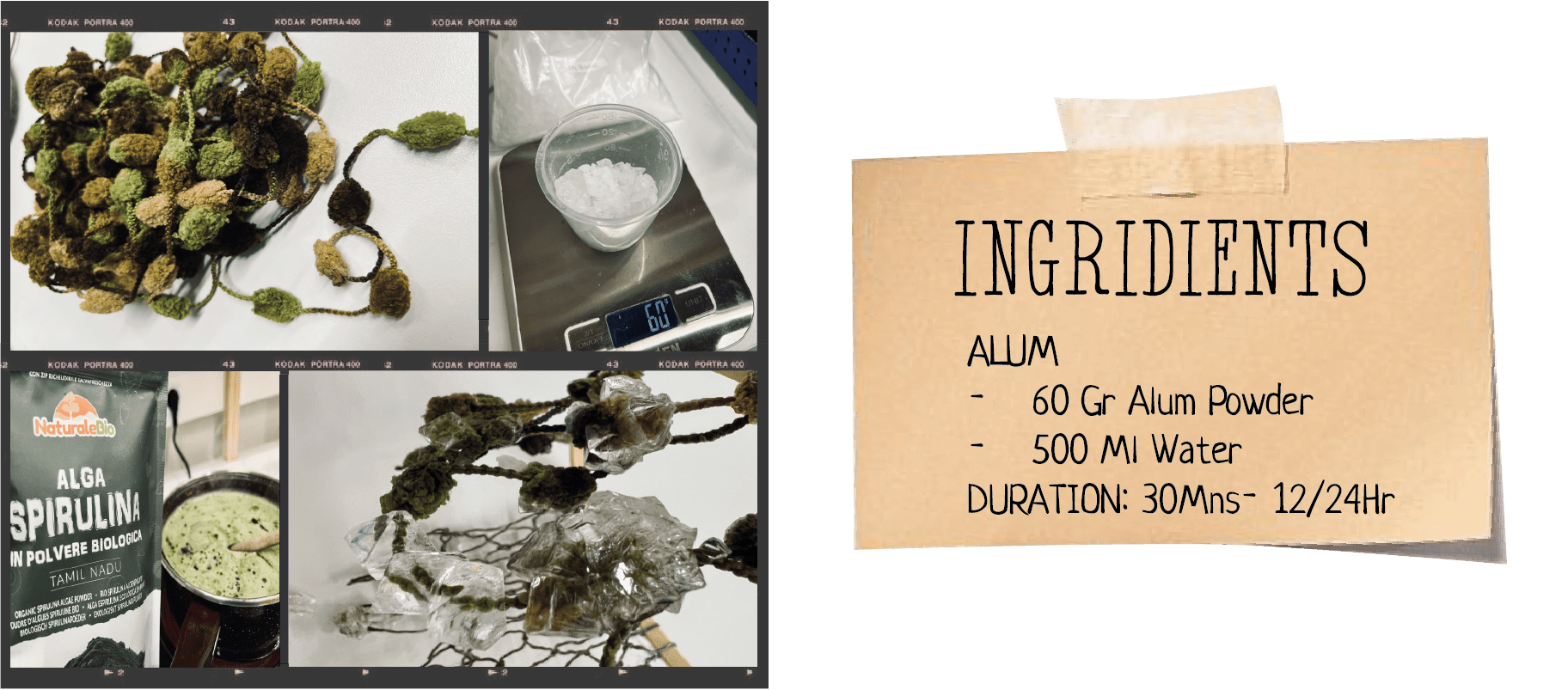
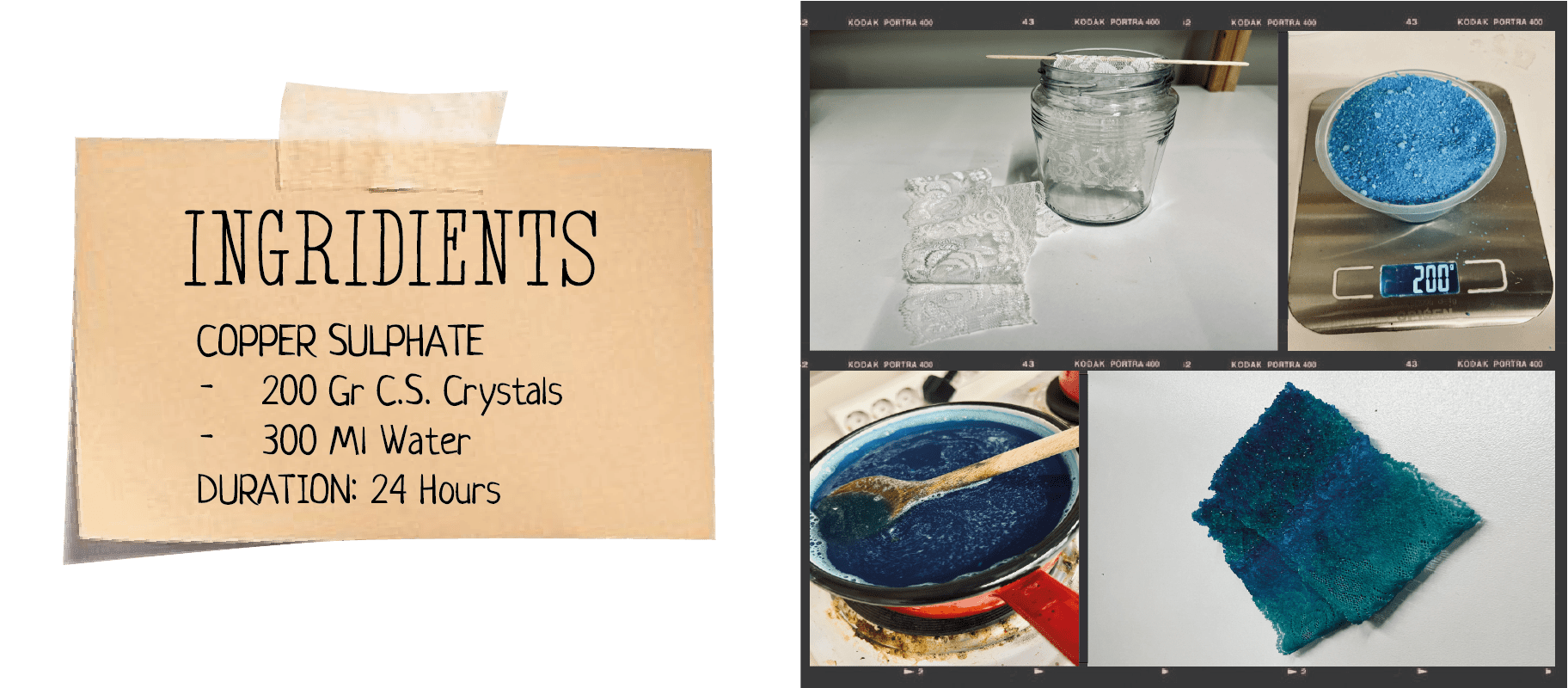
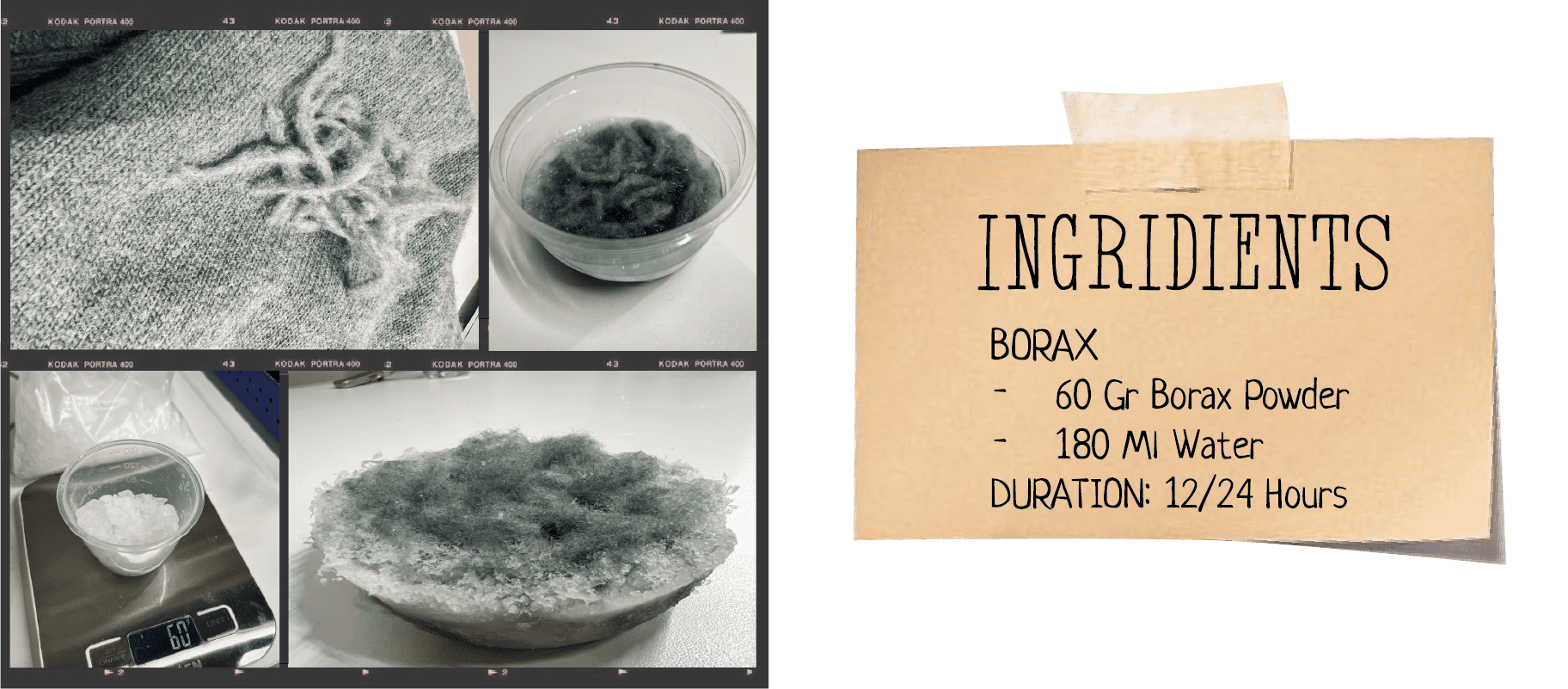 HERE YOU CAN FIND THE CRYSTALLIZATION TUTORIAL TO CONTINUE THE INVESTIGATION.
HERE YOU CAN FIND THE CRYSTALLIZATION TUTORIAL TO CONTINUE THE INVESTIGATION.
INSPIRATION¶
The human eye is the main organ of the visual system and is the basis of our sense of sight. The eye captures light and transforms it into nerve impulses that reach the brain through the optic nerve so that it can interpret them.
This is a nearly spherical hollow globe filled with liquids (humours). The outer layer or tunic (the sclera or white of the eye and the cornea) is fibrous and protective. The media layer (composed of the choroid, ciliary body, and iris) is vascular. The human eye is formed by the fusion of several structures that come from different embryonic tissues. The retina is a derivative of the forebrain (forebrain) and is therefore part of the central nervous system, while the cornea and lens come from the superficial ectoderm.
The iris is the colored tissue in the front of the eye that contains the pupil in its center. The iris helps control the size of the pupil to allow more or less light into the eye.
I find it highly interesting how each person perceives the world through their eyes, the colors, the textures... even a visually impaired person feels everything that surrounds them and that is why I have been inspired by the iris, which curiously no one has a irises the same as someone else's.
Each mushroom is different, just like each eye, the possibilities are endless and we can find beauty in the waste.

CONTENT¶
Fungi are organisms that have cells with a nucleus (eukaryotes) and that require other living beings to obtain their food (they are heterotrophs). Its cells have a thick wall made of a compound (polysaccharide) called chitin, which provides them with rigidity and resistance. Compounds obtained from fungi have been discovered that have applications in health, such as antibiotics, anticancer, antitumor, antifungal and even antiviral. Many of the uses of mushrooms have been discovered serendipitously, this is by accident, such as penicillin.
Mycelium has a lot of great properties like insulation, water repellency, antimicrobial, or even skincare. Mycelia are vital in terrestrial and aquatic ecosystems for their role in decomposing plant material. They contribute to the organic fraction of the soil and their growth releases carbon dioxide into the atmosphere.
The mycelium is a fungal structure with a similar appearance to a root, consistin of a mass of branched hyphae with a thread-like texture, which form the vegetative part of multicellular fungi such as mushrooms and molds. Everything that can be done with mycelium is very interesting, all its possibilities that we had not seen until now and for this reason it reminds me that we muct look again, we must investigate again the possibilities that nature gives us.
 Next we will observe the process of creating the mycelium, once all the particles have been separated and we add the sculptig mix or flour, to put it back together and knead it until it is more or less compact.
Next we will observe the process of creating the mycelium, once all the particles have been separated and we add the sculptig mix or flour, to put it back together and knead it until it is more or less compact.
TO KNOW MORE ABOUT AND WHAT IS MYCELIUM JESSICA DIAS & CATHERINE EUALE MYCO-MATERIALS WORKSHOP
RESULTS¶
To end the research week, here we can see a series of images from the beginning to the final result of the process. In my case I wanted to make some bowls using wool as a second waste.
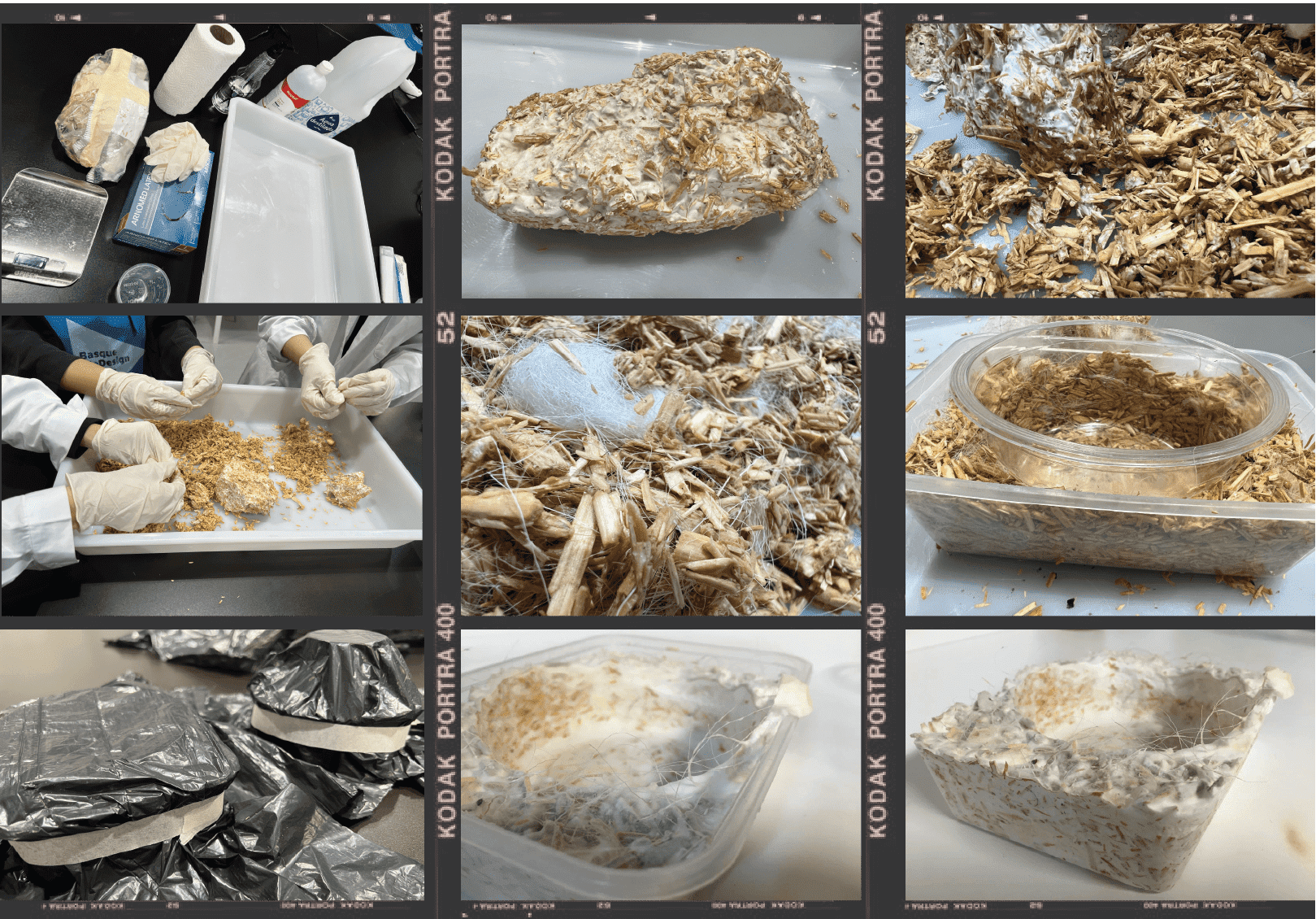
BDC¶
As happens in other centers, at BDC we do parallel activities to Fabricademy where we learn and get inspired thanks to masterclasses or visits to exhibitions.
This week we have been the pleasure to have the designer Jef Montes in our center, who has shown us his work done with knitting and recycled yarn. we can see his work in the images on the left.
On the other hand, we attended to Espacio Open here in Bilbao and saw the work carried out by exalumnis of Fabricademy; to the right in the upper part Cristina's Dezi work an in the lower part Eduardo's Loreto work.
This works inspired us to keep working and learn, to see that after more people appreciates the effort and art.
